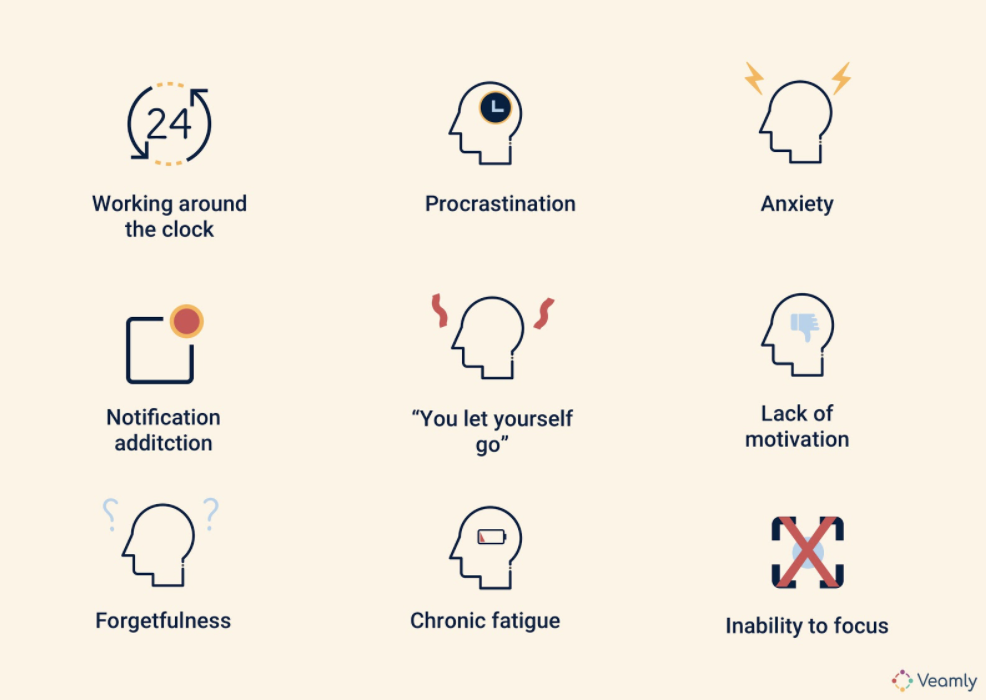We’ve always believed that the future of work is remote. Over the last ten years, there has been a 91% growth in remote work as many forward thinking companies have been moving towards remote work. COVID-19 has expedited this trend by forcing almost all businesses to embrace remote. Since March, over 16 million US knowledge workers have transitioned to working from home.
I sat down with Emna Ghariani, CEO of Veamly, a company that thrives to help developers achieve digital wellbeing while remote.
Emna is a remote work expert and digital wellbeing activist, who has been running remote companies for many years now and she was a fountain of knowledge on the main challenges companies are facing today as well as on some of the best practices to implement in order to save productivity in this new age of remote.
“Remote enabled is simply the new standard.” – Emna Ghariani, Veamly CEO
Most of the tech giants, including Facebook, Apple, Microsoft, have embraced remote and will keep on offering their employees much flexibility to be remote even when the pandemic is over. Twitter and Square went even further, allowing some employees to work from home on a permanent basis. It has now become abundantly clear that we’ll be facing a major change regarding how we work and live. Emna believes that: “Remote enabled is simply the new standard.”
These changes have brought multiple challenges according to Emna, including poor performance, declining productivity, absence and ignorance of processes and workflows adapted to a remote environment, along with absence of the remote adapted organization culture.
According to the research conducted by Slack, nearly half of newly remote workers say that working from home has negatively affected their sense of belonging.
Admittedly, some companies reported an increase in productivity. However, this increase is mostly due to some temporary factors, including the absence of social life and the tremendous fear of being laid off. We should remember that most knowledge employees have no prior experience in remote work and find it hard to adapt to their new workplace reality. They’re more likely to be struggling with adjusting to the new processes and communication which can slow down operational speed and decrease productivity.
Consequently, bigger issues might arise, impacting the employees’ sense of belonging and overall work satisfaction. Collaboration, creativity, spontaneity, informal coffee chats, after work IRL (in real life) happy hours and other face-to-face interactions that aren’t on a scheduled call – all appear different when we are working alone from home.
Zoom burnout is real!
The video conferencing platform helps us stay employed and connected, but it can also be draining. Since March, we’ve been on video calls more than ever before and video calls can be more emotionally exhausting than regular hangouts. In April 2020, Zoom reported a growth to 300 million meeting participants.
In addition to the tech related issues, video communication turns out to bring certain emotional challenges. Being on camera and feeling that you’re constantly watched creates tremendous social pressure; not being able to read non-verbal cues results in additional pressure. Also, delays on phone or conferencing systems of just over a second makes people perceive the responder as less friendly or focused. Not to mention that having to engage in a “constant gaze” makes us uncomfortable and exhausted.

Source: Veamly Inc
According to Emna, after the first step of educating yourself about burnout, it is important to take action. She shared with me 3 efficient ways to do so right away.
1. ADOPT calendar blocking
Calendar Blocking is defining time blocks for your different tasks, activities or events. Many successful people like Elon Musk leverage this technique to get the most out of their day. Emna and her team at Veamly have been using different colors for different time slots. It helps you visualize your day right away. Beyond helping be more focused and more productive, she says that calendar blocking is also an effective communication tool. It allows your manager to get the visibility they need. This way, you are avoiding the fatigue of pushing back when they throw more tasks your way.
2. COMMUNICATE with your manager / with your team and optimize the number of meetings to essential ones.
When WFH or WFA, your manager and team have no visibility about your work environment (do you have even a private space to take meetings), your responsibilities (homeschooling your kids) and sometimes, they don’t even realize that between all the constant increasing communication via synchronous channels like slack along with the constant meetings, you have no real time to do your actual work. This ends up making work a ridiculous amount of extra hours to catch up. By simply giving them this type of visibility and even suggesting better processes to minimize meetings, it will tremendously improve your productivity and wellbeing and reduce stress.
3. EMBRACE asynchronous communication.
With synchronous communication, the problem is that it creates a fake sense of emergency and a heavy interruptive environment with a lot of context switching. You end up highly stressed all the time.
We don’t realize it because we, as a society, are so used to our stress. We live with it, and we don’t even know what a life without bad stress is. By removing that interruptive effect [with asynchronous communication], that’s how we go into the future.
We cannot sustain, as a humanity, this way of life. We cannot keep up with it.
Overall, Emna emphasizes that you can still do great work without experiencing burnouts and suggests that simple things like planning your breaks can make a HUGE difference in keeping away from burnout in a remote environment . Read above and implement the actionable advice to help you prioritize wellbeing.


